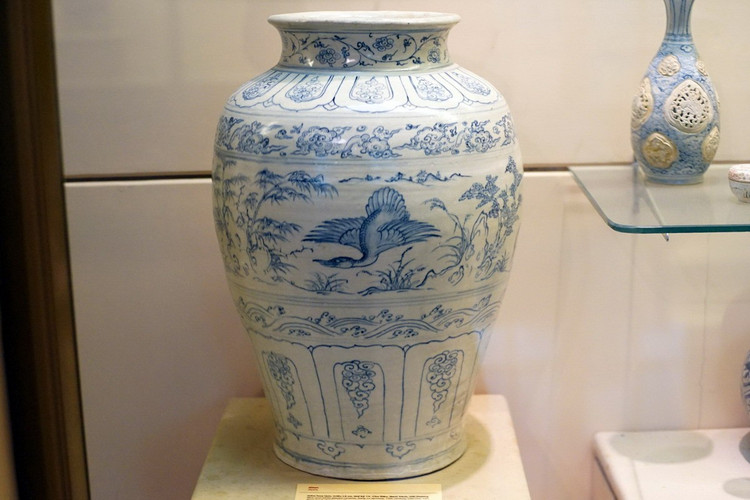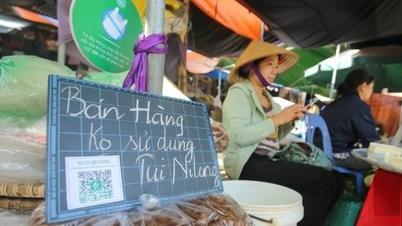The seabed of Vietnam, along the Central and Southern coastal areas, hides many ancient shipwrecks - silent witnesses of a glorious period of trade on the old international sea routes. From Hoi An to Ca Mau , these ships not only reveal the story of ancient trade, but also pose countless mysteries about their origin, journey and fate in the middle of the ocean.
In the 1990s, the discovery of the Cu Lao Cham shipwreck (Hoi An) shocked the archaeological world. This ship contained tens of thousands of beautiful ceramic artifacts, dated to around the 15th century, originating from the Chu Dau pottery kilns ( Hai Duong ) and some ceramic centers in the North. This is clear evidence that Hoi An was once an important transit hub for goods in the East-West trade network, where Vietnamese goods followed foreign merchants to the world. After that discovery, a series of other ancient ship excavations along the coast of Vietnam continued to reveal the complex picture of the ancient maritime route along the East Sea.

Statue of a noble woman made of blue and gold-plated ceramic, early Le dynasty, 15th century, found on an ancient ship in Cu Lao Cham, Hoi An, Quang Nam . Photo: Quoc Le.
In Quang Ngai, two ancient ships in the Binh Chau sea area (discovered in 2013 and 2017) have helped to shed more light on the history of trade in the East Sea. One of them contained more than 4,000 ceramic artifacts, identified as dating from the 15th - 16th centuries, mainly produced in Northern Vietnam, China and Thailand. These ships seemed to be on their way to transport goods to Southeast Asian ports when they encountered the accident. Traces of materials, ship structure, the way of building planks or using wooden pegs all show that the maritime techniques of the Eastern people in the Middle Ages had reached a remarkable level.
Further south, the ancient Hon Cau ship (Binh Thuan) discovered in 2001 also surprised the scientific community. At a depth of nearly 40 meters, divers found a 24-meter-long shipwreck containing tens of thousands of Chinese ceramic artifacts dating back to the 15th century. The presence of Chinese characters on the ceramics, along with a different style of shipbuilding, suggests that this could be a Chinese merchant ship following the Guangdong-Hoi An-Malacca trade route.

National treasure: Blue and white ceramic vase with swan painting, early Le Dynasty, 15th century, found on an ancient ship in Cu Lao Cham, Hoi An, Quang Nam. Photo: Quoc Le.
Not long before, in the waters of Ca Mau, another ship – known as the “Ca Mau ancient ship” – revealed the story of trade between China and the West in the 18th century. This ship, discovered in 1998, carried more than 130,000 ceramic artifacts produced in Jingdezhen (China), and was believed to be on its way to Batavia (Indonesia) or Europe when the accident occurred. The goods on board, especially those bearing the mark of a fusion of Asia and Europe, showed that Vietnam was at that time a transit point on the global trade route.
Most recently, heavy rains and floods caused by storm Fengshen (storm No. 12) accidentally revealed an ancient ship right on the coast of Hoi An - a land that used to be the busiest trading port in Asia in the 16th century. According to a survey by the Hoi An World Cultural Heritage Conservation Center, the exposed part of the ship is about 17.4 m long, more than 5 m wide, many structural details such as bamboo, planks, partitions, etc. are still quite intact. The ship was built with precious woods such as Lagerstroemia, Kien Kien and Pine - materials that are water-resistant and highly durable. Experts say this is a large ship, capable of making long voyages, serving commerce or even naval battles.
Preliminary examination results show that this ship has many similarities with ancient shipwrecks found in the Southeast Asian sea, especially those dating from the mid-14th to 16th centuries – the period when Hoi An was emerging as an international trading port. Although the absolute age by C14 method has not been determined, the location of discovery and technical characteristics of construction indicate that the ship may belong to the period of strong development of Hoi An port.
When you place the shipwrecks from Hoi An, Quang Ngai, Binh Thuan to Ca Mau on a map, you will see that they are located on the same axis – the ancient maritime route running along the coast of Vietnam, used for centuries by traders from China, Japan, Arabia, and Portugal. The ocean currents, monsoons, and geography have turned Vietnam’s seas into a “highway” connecting the two worlds of East and West.
To this day, although much valuable historical data has been revealed, the mysteries surrounding these ships have not been fully solved. Where did they come from, who were they carrying, why did they sink? How many other ships lie deep under the sand of the sea yet to be discovered? Every piece of wood, every broken piece of pottery is a clue to a larger story of the past.
From Hoi An to Ca Mau, ancient ships not only tell the story of trade, but also reflect the stature of Vietnam on the international trade map hundreds of years ago: A country that was once a destination, a bridge and also a witness to the era of sailing ships that has faded into the past…
Source: https://khoahocdoisong.vn/kham-pha-nhung-con-tau-co-duoi-day-bien-viet-nam-post2149067616.html


























































































![Dong Nai OCOP transition: [Article 3] Linking tourism with OCOP product consumption](https://vphoto.vietnam.vn/thumb/402x226/vietnam/resource/IMAGE/2025/11/10/1762739199309_1324-2740-7_n-162543_981.jpeg)











Comment (0)